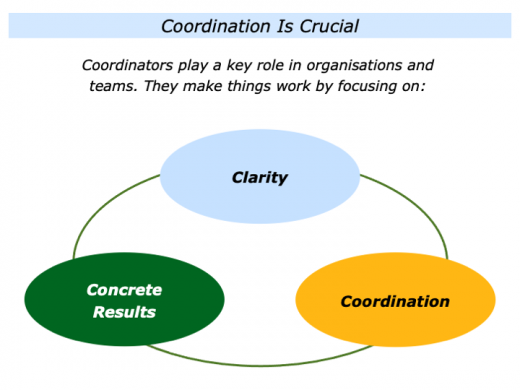
People use different models for building great teams. Whatever model they use, however, it is vital for to coordinate people’s efforts towards achieving the picture of success.
Coordinators are great orchestrators and make things work. They are often good at connecting with people and coordinating their strengths to deliver the desired concrete results.
Modern organisations recognise that coordination is crucial. Why? Getting creative people to combine their talents can be a challenging task at the best of times. Coordinators ensure that people channel their efforts towards achieving the agreed goal.
Clarity is vital. The leader’s role is to communicate the purpose, principles and picture of success. The team member’s role is to make clear contracts about their part in achieving the goals. People then deliver consistently high standards and do their best to achieve the picture of success.
Great leadership and coordination plays a key role in all teams. Warren Bennis and Patricia Ward Bierdeman underlined these themes in their book Organizing Genius – The Secrets Of Creative Collaboration. Here is an excerpt from one summary of the book.
The authors studied six Great Groups whose work affected and sometimes changed the modern worlds.
These include the Disney organization; the Xerox Corporation’s Palo Alto Research Center, which designed the first user-friendly computer and the Black Mountain College in the foothills of North Carolina, which lasted only from 1933 to 1956 but attracted many major artists.
All of these groups, the authors stress, consisted of enormously talented people with a sense of mission, who worked under a strong leader and were imbued with pragmatic optimism.
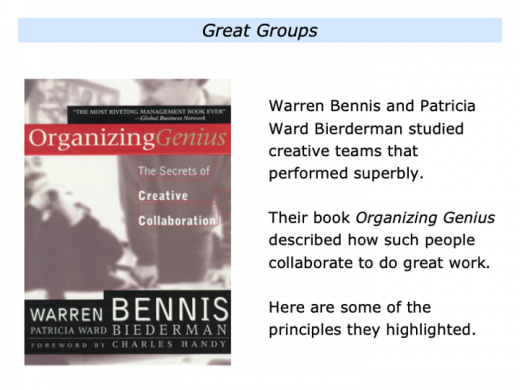
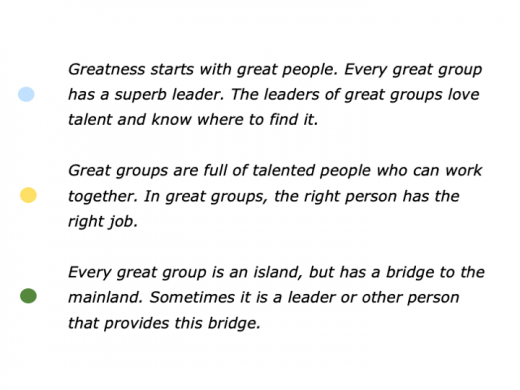
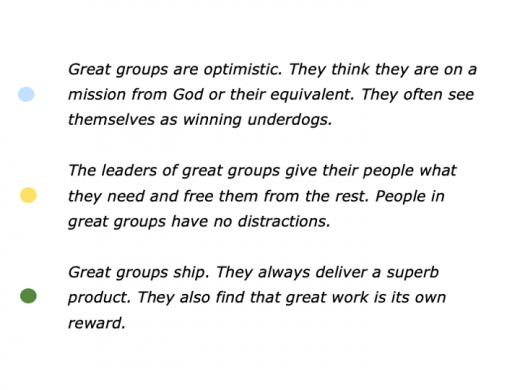
Strong coordination plays a vital part in channelling people’s talents towards a compelling goal – otherwise individuals may do their own thing. Let’s explore how this works in practise.
Clarity
Coordinators are good at managing upwards and clarifying the real results the leader wants to achieve. They then communicate this clarity to other people in the organisation.
Sometimes this involves continuing to communicate the organisation’s purpose, principles and picture of success. Sometimes it may involve focusing on a specific piece of work and clarifying the real results to achieve.
Coordinators realise that sometimes the desired results can evolve. This can be the case when with working with a visionary founder or leader who has lots of ideas.
Bearing this in mind, they keep in touch with the leader to confirm or develop the desired goals. Sometimes they may need to translate these new aims in ways that enable the employees to take them on board.
Coordinators may also sometimes need to provide air cover for their people. This can be necessary if other stakeholders start passing down tasks without first checking that these fit with the overall strategy.
Coordinators also encourage the leader to play to their strengths. They see their role as making sure the engine keeps running and delivers excellence. This helps the leader to feel more at ease and focus on where they excel.
Coordination
Good coordinators make things work. They often do this by harnessing people’s strengths to achieve the agreed picture of success. They aim to manage by outcomes rather than by tasks.
They start by explaining the big picture. This is especially vital with knowledge workers who want to know the context. They then take the following steps before making clear contracts with people:
They remind people about the organisation’s purpose, principles and picture of success;
They explain where the specific piece of work fits into achieving the picture of success;
They explain the real results – the outcomes – to achieve by doing the piece of work;
They then take these steps to coordinate people’s strengths.
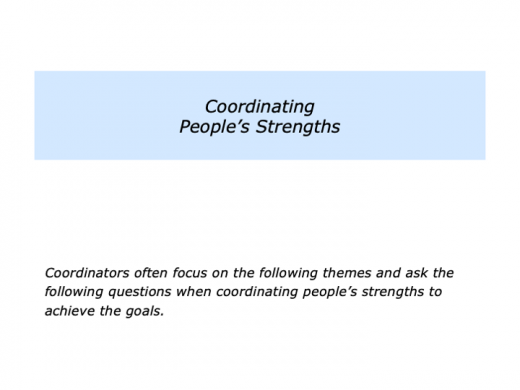
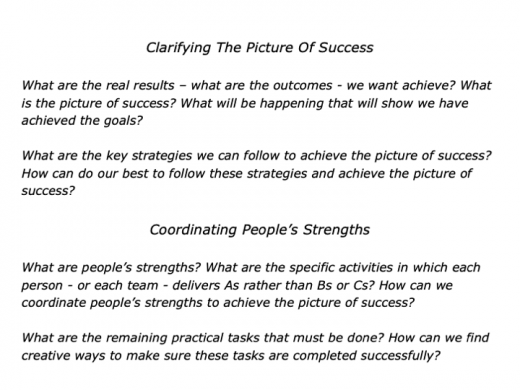
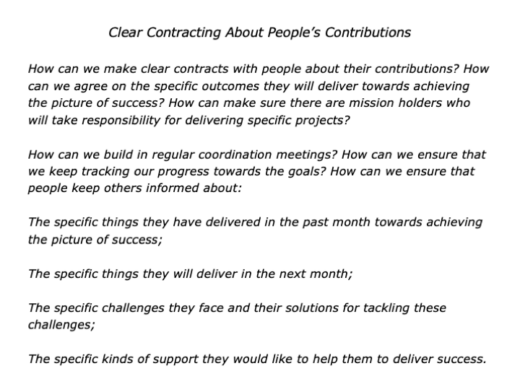
Good coordinators manage by outcomes rather than by tasks. They make clear contracts with people about the contributions they will make towards achieving the picture of success.
People must be able to describe what they will deliver in outcome terms. This can be challenging because many people are used to writing lists of tasks. They describe what they are going to do rather than what they are going to deliver.
Good coordinators spend a lot of time with each team and, when appropriate, each person agreeing on the outcomes to be delivered.
Why? Because from then on virtually every performance conversation will start by concentrating on this What – the agreed outcomes – rather than getting into supervising the tasks.
After such a contracting session, here is how one team leader might describe their contribution under Profits, Products and People.
My Contribution To The Picture Of Success
Profitability
To ensure my team achieves its financial targets – a profit of £500k;
To develop three new customers and do work with them that delivers a profit of £100k;
To reduce our overheads by £100k.
Products
To ensure more than 90%+ of our customers say they are extremely satisfied with our work;
To develop two new products and pilot these successfully with customers – then launch these products by the end of the year;
To simplify two of our complex products to ensure these are more user friendly for customers – then get a further £100k’s worth of orders for these before the end of the year.
People
To deliver an internal morale rating of 90%+ of our team members saying they enjoy coming to work each day;
To educate, equip and enable two of my team members to win promotion and move on to other roles in the company;
To recruit four new positive team members who take responsibility and who will contribute to helping the team to achieve success.
Coordinators set-up people to succeed. They agree on the outcomes to achieve and give people the required support. They also like to be kept informed. They ensure that people proactively update them about their progress towards achieving the goals.
Coordinators focus on the outcomes to achieve when people are faced by challenges. During the conversation, they keeps returning to the agreed What. They say something along the following lines.
Let’s go back to the real results to achieve. How can we do our best to deliver those results?
What are the options going forwards? What are the pluses and minuses of each option? What is the route we want to follow? How can we follow this route and do our best to deliver the results?
Why take this approach? People can get into a pattern of talking about details. They may also confuse activity with results. Whether it concerns profits, product quality or people, the mantra is:
Let’s go back to agreed outcomes. How can we do our best to deliver those results?
One point is vital when coordinating teams. You can make clear contracts with the leader, but it is important to have a coordinator in each team.
They can make sure the plans are implemented and keep you up to date with the team’s progress. You can then orchestrate everybody’s efforts to achieve the picture of success.
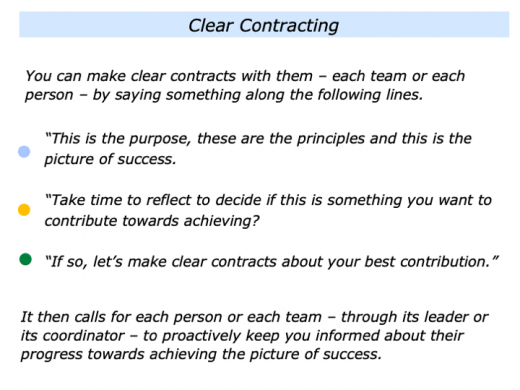
Consistently High Standards
Coordinators encourage people to deliver consistently high standards. They make clear contracts with the teams and individuals about:
The specific standards they will deliver when
working towards achieving the picture of success
There are many models for encouraging people to maintain high standards. One can be found in the work of Bill Walsh, the coach of the San Francisco 49ers American Football team.
Bill believed it was vital for everybody in an organisation to deliver a certain Standard of Performance. This was more important than striving for winning. He believed that, providing people consistently delivered the Standard of Performance, the score took care of itself.
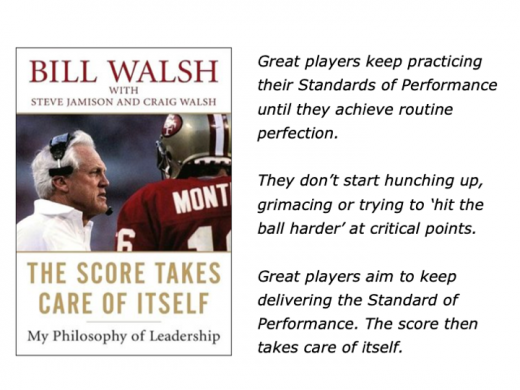
Did it work? Despite not focusing on winning, his team was hailed as a dynasty.
It took two seasons – 1979 and 1980 – to turnaround the ailing team. The 49ers then won the Super Bowl three times – in 1981, 1984 and 1988 – before Bill retired.
Taking Over The San Francisco 49ers
Bill took over the team in 1979. Interviewed for the book The Score Takes Care of Itself, by Steve Jamison and Craig Walsh, he said that his aim was to create an environment of excellence.
The first two years were difficult. He aimed to build a top-notch organisation rather than one that was toxic. This called for hiring great people and moving on those who chose not to meet the required standards. Bill explained this in the following way.
“I came to the San Francisco 49ers with an overriding priority and specific goal – to implement what I call the Standard of Performance.
“It was a way of doing things, a leadership philosophy that has as much to do with core values, principles, and ideals as with blocking, tackling, and passing: more to do with the mental than with the physical.
“While I prized preparation, planning, precision, and poise, I also knew that organizational ethics were crucial to ultimate ongoing success.
“It began with this fundamental leadership assertion: Regardless of your specific job, it is vital to our team that you do that job at the highest possible level in all its various aspects, both mental and physical (i.e., good talent with bad attitude equals bad talent).
“There are also the basic characteristics of attitude and action – the new organizational ethos – I tried to teach our team, to put into our DNA.
“Of course, for this to happen the person in charge – whether the head coach, CEO, manager, or assembly line foreman – must exhibit the principles.”
This called for commitment to details, such as people having a positive attitude, no shirttails out when wearing the 49ers uniform, being prompt, showing good sportsmanship.
No strutting, posturing or cheap shots, controlling of profanity, treating fans with respect and always exhibiting professional behaviour.
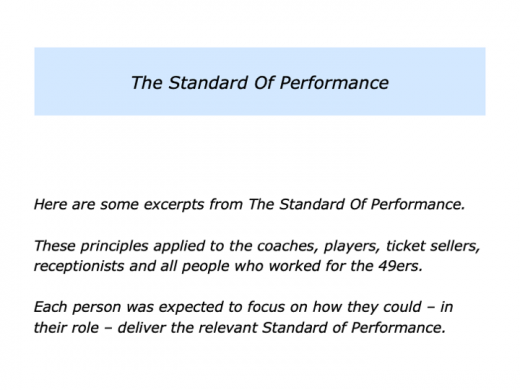
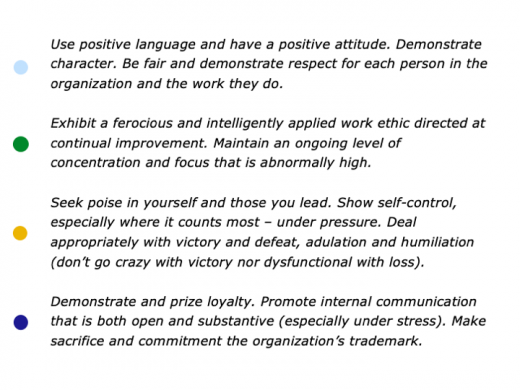
Bill believed that leaders must develop the right strategy for delivering success. This included developing the right planning for tackling various scenarios. He explained this in the following way.
“The motto of the Boy Scouts, ‘Be prepared,’ became my modus operandi, and to be prepared I had to factor in every contingency: good weather, bad weather, and everything in between.
“I kept asking and answering this question: ‘What do I do if…?’ You must envision the future deeply and in detail – creatively – so that the unforeseeable becomes foreseeable. Then you write the script for the foreseeable.
“Of course, there’s always something you can’t anticipate, but you strive to greatly reduce the number of those foreseeables.”
He followed the 80/20 rule. The 49ers focused on maximising the 80% they could control in a game. There may be 20% they couldn’t control, such as a referee’s call, a bad bounce or fortune.
Bill encouraged his teams to prepare properly. People were expected to practice relentlessly until their execution at the highest level was automatic. He called this routine perfection and described it in the following way.
“Maintenance workers, ticket takers, parking lot attendants, and anyone receiving a pay check with the emblem of the San Francisco 49ers on it were instructed as to the requirements of their own job’s Standard of Performance and expected to measure up.”
Bill encouraged people to follow certain core principles and translate these into action. This called for them continuing to deliver consistently high standards in changing circumstances.
“The culture precedes positive results. It doesn’t get tacked on as an afterthought on the way to the victory stand. Champions behave like champions before they’re champions; they have a winning standard of performance before they are winners.”
Bill was true to his philosophy and principles. The key was to ensure that people delivered the Standard of Performance.
Here is an example of the Professional Standards described by another organisation. Potential employees were given illustrations of how these were translated into action. They were then invited to decide if they wanted to join the organisation.

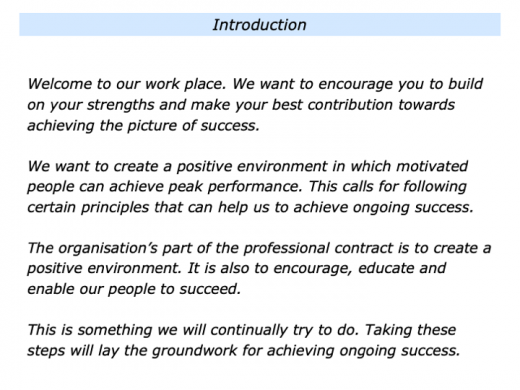
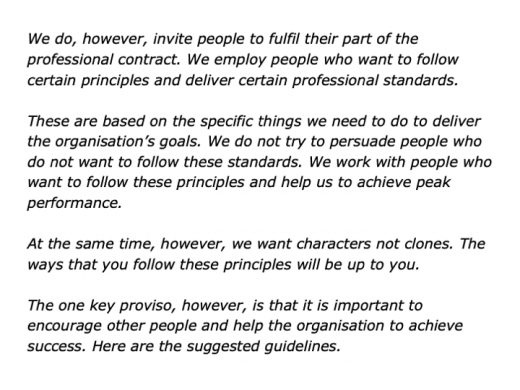
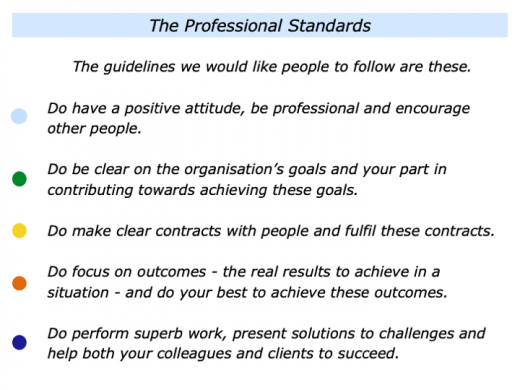
Let’s return to the theme of coordination. Good coordinators stay calm in challenging situations but also act with appropriate urgency. They also sometimes need to find creative solutions to challenges. Let’s explore this theme.
Creativity
Coordinators plan ahead and aiming to prevent potential difficulties. They also consider how to solve problems if, despite everything, these challenges do happen. Some people do the following exercises to prepare for such challenges.

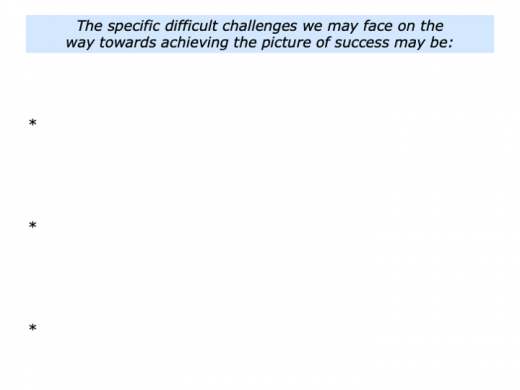
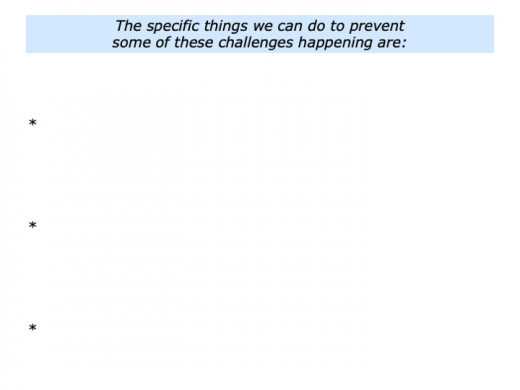
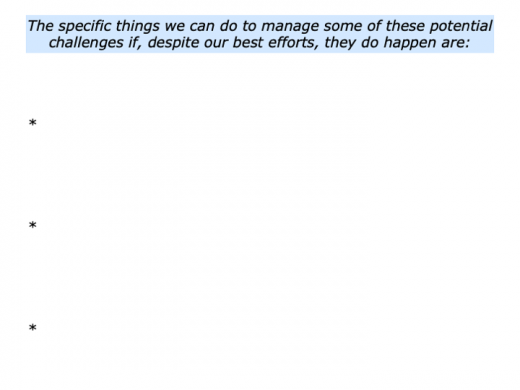
Good coordinators often enjoy finding solutions to challenges. They often aim to buy time to think, gather information and explore the possible ways forward.
Different people use different approaches for creative problem solving. One approach is to use the Three C model which involves focusing on Clarity, Creativity and Concrete Results. We will be exploring this approach later in the book.
Concrete Results
Good coordinators get some early wins rather than embark on long process analyses. Success breeds success. It also buys time to tackle the more long-standing challenges.
They keep in touch with the leader and see their role as being proactive rather than that of being a glorified progress chaser.
They have regular meetings with the leader to look ahead to the next week, the month and the next quarter. They clarify the challenges facing the team and agree on the potential solutions.
Good coordinators ensure that people proactively keep them informed about their progress towards achieving the goals. They set up sessions where each team, for example, continually reports on the following themes.
Progress Report
The specific things we have delivered in the
past month towards achieving the goals are:
*
*
*
The specific things we aim to deliver in the
next month towards achieving the goals are:
*
*
*
The specific other topics we would like to highlight – such as
positive suggestions, solutions, challenges and any other issues
– that are relevant in terms of working towards the goals are:
*
*
*
Some coordinators take another approach to making sure things are on track. They have a dedicated room or other place that shows the state of play regarding pursuing the various strategies.
People flag up the activities that are currently in the green, amber and red zones. They also suggest what can be done to maintain or improve what is happening in these areas.
One company I worked with had a dedicated room where people constantly updated the progress towards achieving the goal. It had charts that covered the following areas.
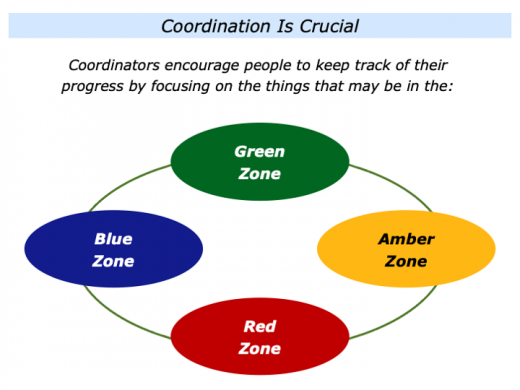
The Picture Of Success
People could keep referring to the company’s aims that were displayed on one wall. These were grouped in terms of what it wants to achieve under the Three Ps: profits, products – including customer satisfaction – and people.
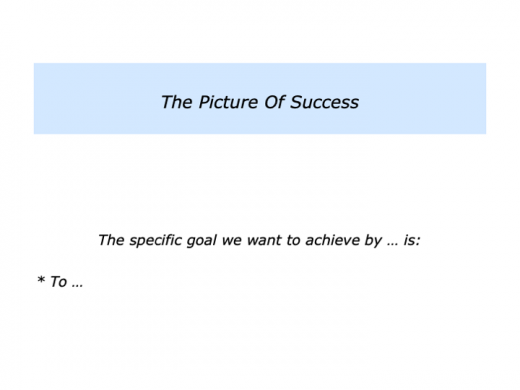
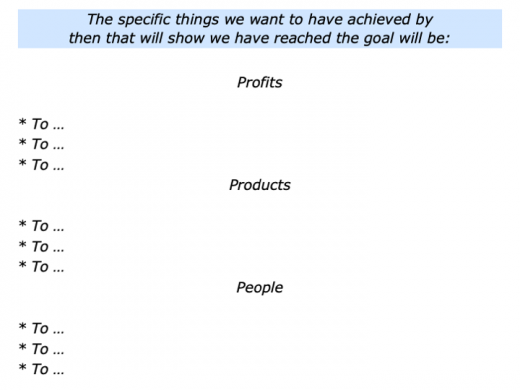
The other walls had the following charts that described the current state of play regarding various activities.
The Green Zone
People listed the things that were going well. They also provided concrete suggestions regarding how to maintain or build on these activities.
Great workers build on what is working. If things are going well with a particular customer, for example, they explore how to continue providing great service. This can lead to developing the relationship even further.

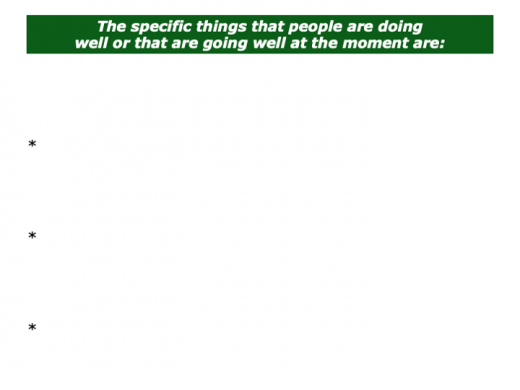

The Amber Zone
People described where there were warning signs. They also provided suggestions regarding how to improve these activities.
Great workers worry about things that are in the amber zone. They are concerned that, unless these issues are addressed, these may quickly slide into the red zone. So they focus on how to move these activities more towards the green zone.
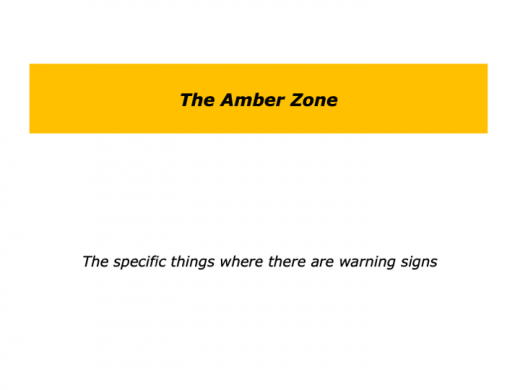

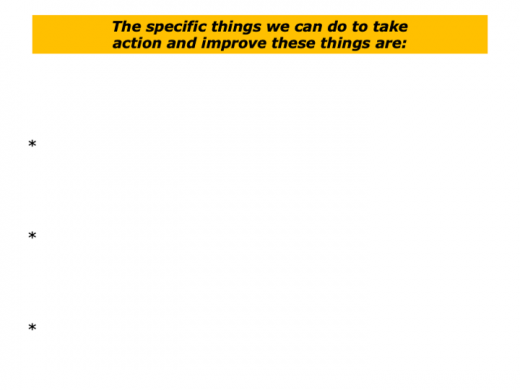
The Red Zone
People listed the things that were going badly and gave suggestions regarding how to improve these activities. These could involve making radical improvements or for taking key decisions.
Great workers think ahead to ensure that things do not slide into the red zone. Crises do occur, of course, so then it is vital to find positive solutions.
There may be some issues, however, that are continually falling into the red zone. If systems are breaking down, for example, these may well need replacing.
A more challenging issue could be if a particular customer continually makes life difficult. Certainly it is vital to do whatever possible to provide great service. In some instances, however, a customer may prove impossible to please.
They may also prove to be a massive drain on resources. In such cases it may mean deciding to move on from the customer. This can be a difficult but necessary decision.
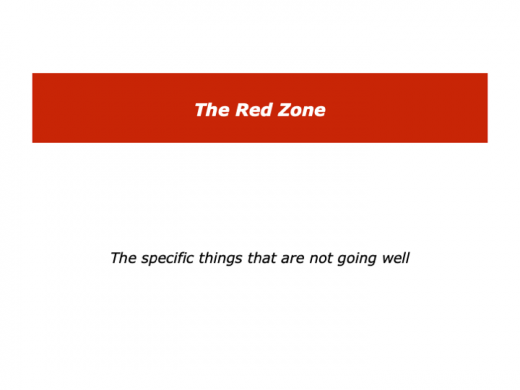

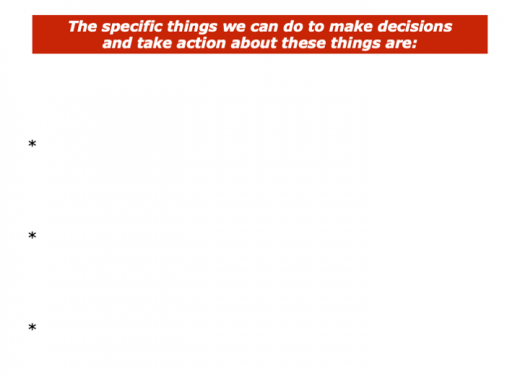
The Blue Zone
The company also went further and added another area called the blue zone. This was the space for both practical and imaginative ideas.
People listed the specific ideas, suggestions and other things that it might be worth considering to help the team shape a successful future. This led to some of the ideas being implemented and delivering positive results.
Great workers continually look for ways to improve. It can be useful to create different forums for exploring these ideas and then translating some of these into action.
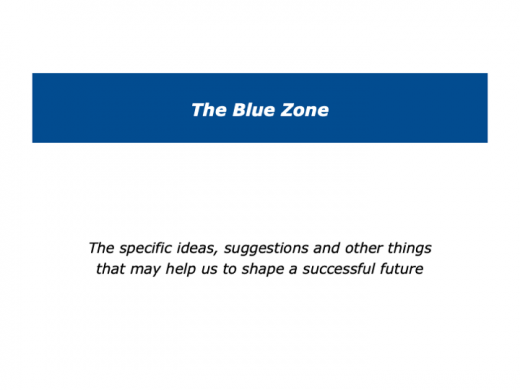
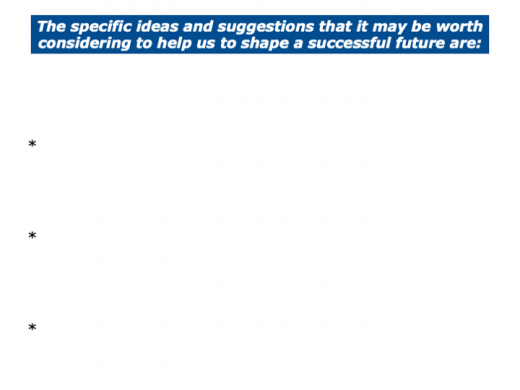
Taking Action
Good coordinators also encourage people to embody the ethic of continuous improvement. They invite people to build on their strengths and also tackle areas for improvement.
There are many models for making this happen. One approach is to invite people to review the piece of work they have done by completing the following exercise.
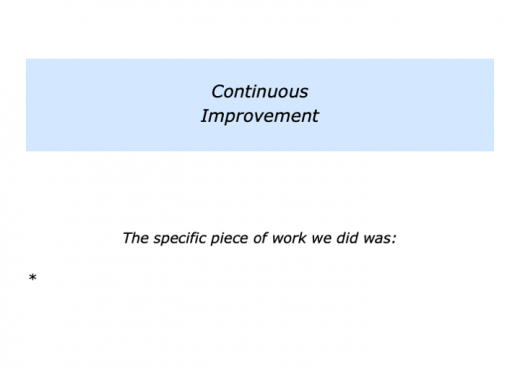

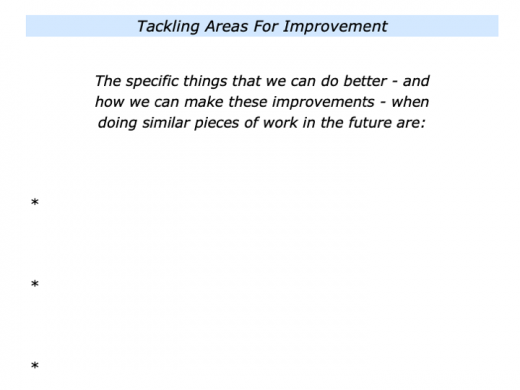
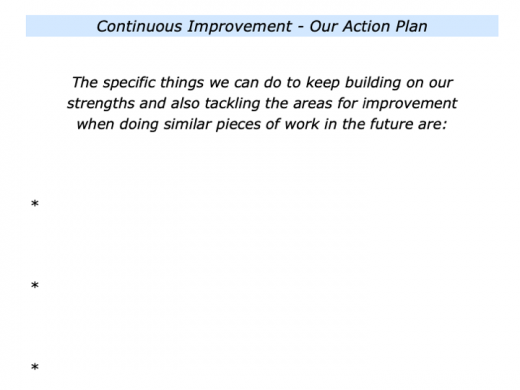
Good leaders recognise the importance of coordinators. They know that clarity is the starting point for any venture but coordination is the bridge to producing concrete results.
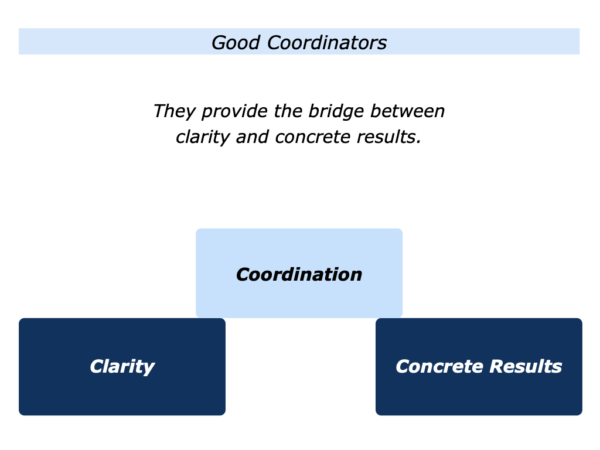






Leave a Reply